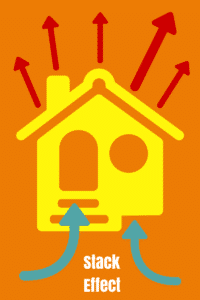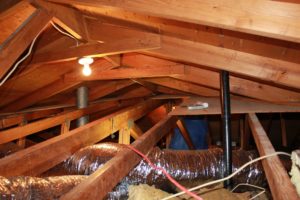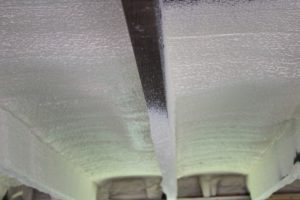
Air Sealing Historic Homes
If you’ve recently had a home energy audit performed on your historic New Orleans home, you’ve probably discovered that the structure has dozens if not hundreds of hidden air leaks. What’s the story behind all these cracks and crevices?
Where do air leaks come from?
Air leaks are created during the construction of the house, so many have been there since well before you were born. In fact, many older historic homes in the south have features built in to encourage the passage of the air between the inside and the outside of the house. Banks of windows, fanlights, and transoms are a few of these culprits. In addition, as these homes were updated to equip them with emerging technologies like electricity and indoor plumbing, more air passages were created as electricians, HVAC contractors, and plumbers drilled channels for wires, ductwork, water lines, and waste pipes. Air sealing historic homes will add considerable livability to the home.
Age itself contributes to air leaks in any older home. As the house settles in the soft Louisiana soil, cracks are formed at the unions of your home: around the chimney, for example, or around window sashes. The wooden joists that may have begun airtight, shrink over time, pulling away from one another and destroying that airtight seal. Likewise, other materials expand and contract, decreasing your home’s seal. The leaks can not be seen with the naked eye. The benefits of spray foam insulation is allows air sealing into these cracks and crevices. This is essential to get the maximum benefits when air sealing your historic home.
Sealing your attic

The best place to start air sealing your home is your attic, where the most significant leakage in your home occurs. Due to the stack effect, variations in the temperature of your home, which are caused by unconditioned air forcing its way through exterior cracks, force conditioned air out of your home. An uninsulated, unsealed attic in the summer becomes a pressure cooker, with unconditioned air expanding and forcing its way into the cooler parts of your home through leaks around ductwork, lighting fixtures, and aging joists, causing your HVAC unit to work harder.
Sealing your crawl space

After your attic is sealed, look to your crawlspace, another source of significant air loss. Here again the stack effect takes its toll on your home’s comfort. In particular during the winter, cold air from beneath the home leaks up from your crawl space through floorboards, where many small cracks exist due to your home’s natural aging process. This means your heating system will have to struggle to continually heat this infiltrating air.
Sealing your living area
Finally, your home’s living space can be tackled. While your exterior walls certainly have leaks, they aren’t as extreme as those found in your attic and crawlspace. Decreasing air loss in these areas can be a very simple procedure of simply sealing around electrical outlets, doors, and windows.
Spray foam insulates and seals
Air leaks contribute to your home’s energy waste significantly, and sealing these before insulating can reduce your home’s energy bill by 20% or more in a historic home with major cracks and gaps. Because spray foam insulation can perform effectively as an air sealer, it’s possible to kill two birds with one stone by applying this cutting-edge insulation in your attic and crawl space, which is why we often recommend it to homeowners whose historic homes are suffering from serious energy loss.
If you’re the proud owner of a historic New Orleans home and a recent energy audit has revealed you’re losing conditioned air through leaks, give Sunlight Contractors a call. Our knowledgeable energy experts will help you create an energy savings plan that will solve your air leak problem with the gentle touch historic homes demand.
Locations:
Main Office: Sunlight Contractors, LLC 2323 Bainbridge St #110, Kenner, LA 70062 (504) 919-9993
New Orleans location: Sunlight Contractors, LLC 650 Poydras St, Suite 1400, Rm 33, New Orleans, LA 70130 (504) 302-0058
Proudly Serving the following areas:
[wpgmza id=”2″]
